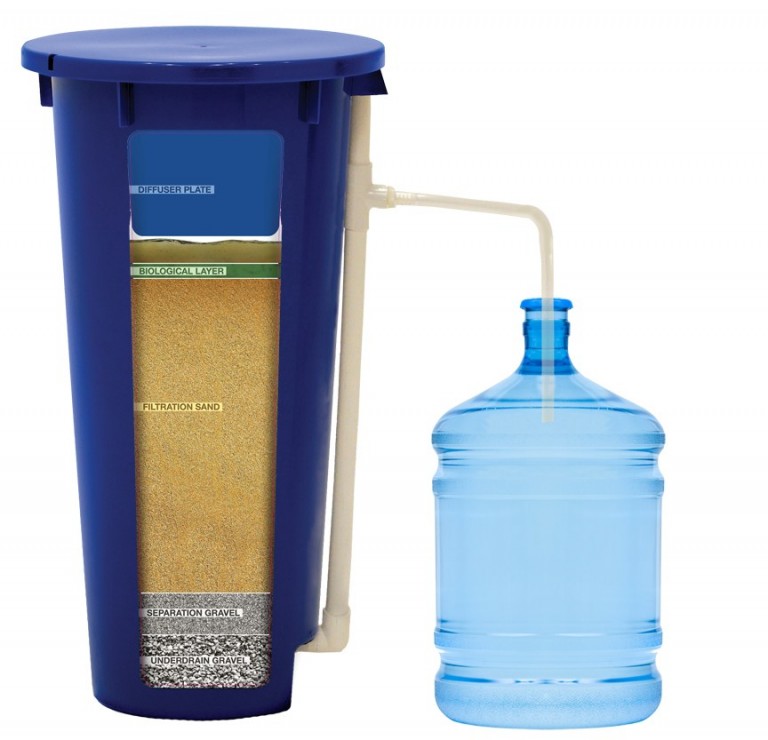Necessity, Types and Technology of
Filter Water
Filter
water becomes necessary when tap water quality is not good enough. Tap water
quality is generally considered safe as it come from pubic water system and
usually maintain a regulatory health standard. But for some countries,
specially some developing ones, not all the municipalities can conform to this
regulatory health standards. Also, public water system can get contaminated as
well by harmful microorganisms (E. coli,
Cryptosporidium etc.) or chemicals getting (Lead, pesticides etc.) into it via
broken piping system. As a result, the tap water quality may not be that high
standards and can be harmful, specially to vulnerable and sensitive population.
Sometimes, the tap or well water is safe enough to drink, but it has some odor,
taste or smell in it that make it undesirable.

Stack of Different water Filter Media (Image by Wikimedia)
When
tap water, quality is not good enough, it become necessary to filter water to
make it safer. But what type of filter to choose depends on what have to be
removed as different filters are good for different range of contaminants. In
the last decade, home water filter demands as well as supply has increased
tremendously. So, it is not easy to choose a particular product from many. But
it is definitely helpful to know the target contaminants and results can be
obtained by sending water sample to a local water testing laboratory (a certified
one is preferable, if there is one available).
In general, different type of filter and their target contaminants are
discussed below:
Filter Water Technologies and Target Contaminants:
Activated carbon filter:
This type of filter is effective for removing organic contaminants, taste and odor. This filter may also be effective to remove residual disinfectant like chlorine and chlorine by products as well as other solvents and pesticides. The two principal mechanisms by which Activated carbon removes contaminants from water by using two main principals - adsorption and catalytic reduction. Organic contaminants are removed by adsorption and residual disinfectants are removed by catalytic reduction.
Ion Exchange Filter:
Ion-exchange filter percolates water through
spherical, porous bead resin materials while ions in the water are exchanged
for other ions fixed to the beads. The two most common ion-exchange methods are
softening and deionization. Softening is used primarily to reduce water
hardness. This filter is effective to remove minerals like calcium and
magnesium. This type of filter is often use in combination with activated
carbon and reverse osmosis filter.
Reverse Osmosis Filter:
Reverse osmosis or RO filter is known as ultimate water purification technology. while reverse osmosis water filters will remove a wide spectrum of contaminants such as dissolved salts, Lead, Mercury, Calcium, Iron, Asbestos and Cysts, it will not remove some pesticides, solvents and volatile organic chemicals (VOCs) like Chlorine, Radon, trihalomethanes and some certain pesticides. But if used along with activated carbon filter together they can remove a wide variety of contaminants.
Distillation:
This technology first heats water to vaporize it
and then condenses it back into water. The process removes minerals, bacteria,
viruses and chemicals that have a higher boiling point than water. But
unfortunately, this process cannot remove chemicals like chlorine,
trihalomethanes or volatile organic chemicals (VOCs).
Mechanical Filters:
Mechanical filters are physical filters with small holes that remove contaminants such as cysts and sediments. They are often used in conjunction with other kinds of technologies, but sometimes are used alone. They cannot remove chemical contaminants.
A list of different contaminants found in water and a list of systems certified to treat them can be found in the following NSF website link:
List of contaminants and certified system to treat them by
NSF
But no matter what filter system is chosen, it needs
to be maintained properly as with time contaminants accumulate on the filter.
After certain period using that filter may produce worse quality water than the
original unfiltered one. That is why it is crucial to replace water filter as
per the manufacturer guideline.
More Guidance on Filter Water
Total Visits to Site: